Monacor DN-2618P Handleiding
Monacor
Niet gecategoriseerd
DN-2618P
Bekijk gratis de handleiding van Monacor DN-2618P (2 pagina’s), behorend tot de categorie Niet gecategoriseerd. Deze gids werd als nuttig beoordeeld door 56 mensen en kreeg gemiddeld 4.4 sterren uit 28.5 reviews. Heb je een vraag over Monacor DN-2618P of wil je andere gebruikers van dit product iets vragen? Stel een vraag
Pagina 1/2

ELECTRONICS FOR SPECIALISTS ELECTRONICS FOR SPECIALISTS ELECTRONICS FOR SPECIALISTS ELECTRONICS FOR SPECIALISTS ELECTRONICS FOR SPECIALISTS ELECTRONICS
DN-2618P
Bestell-Nr. • Order No. 12.6460
MONACOR INTERNATIONAL GmbH & Co. KG • Zum Falsch 36 • 28307 Bremen • Germany
Copyright© by MONACOR INTERNATIONAL. All rights reserved. A-1723.99.02.07.2019
High
8 Ω
Bass/Mid
8 Ω (4 Ω)
BM
L 1
0m68
L 2
0m27
H
C 1
3µ
150 V
MKT
R1
4Ω7
10 W
I N P U T
C 2
10µ
150 V
MKT
S1
12 V
18 W
Rx
L 1
8 Ω
(4 Ω)
B8 Ω H
IN
Input
BM
H
R 1
C 2
C 1
Rx
L 2
S 1
DN-2618P
MONACO R INT ERNAT IONAL
ZUM FALSCH 36 28307 BREMEN·
GERMANY
MAX. 350 W/8Ω
➂
➀
➁
20 50 100 200 500 1k 2 k 5 k 10 k 20 kHz
40
30
20
10
dB
2-Way Crossover Network
for Speaker Systems
These instructions are intended for non-
professionals with basic knowledge in DIY
speaker building. Please read the instruc-
tions carefully prior to operation and keep
them for later reference.
1 Applications
This crossover network is specially designed
for setting up a 2-way speaker system with a
power capability of up to 350 W. It features a
high-quality design and is equipped with film
capacitors and a tubular lamp as a protection
for the tweeter.
2 Important Notes
The crossover network corresponds to all rel-
evant directives of the EU and is therefore
marked with .
•
The crossover network is suitable for indoor
use only. Protect it against dripping water
and splash water, high air humidity and heat
(admissible ambient temperature range:
0 – 40 °C).
•
For cleaning only use a dry, soft brush; never
use water or chemicals.
•
No guarantee claims for the crossover net-
work and no liability for any resulting per-
sonal damage or material damage will be
accepted if the crossover network is used for
other purposes than originally intended, it it
is not correctly connected, if it is overloaded,
or if it is not repaired in an expert way.
If the crossover network is to be put
out of operation definitively, take it to
a local recycling plant for a disposal
which is not harmful to the environ-
ment.
3 Connection
1) Connect the bass / midrange speaker (4 Ω or
8 Ω impedance depending on the desired
crossover frequency, ☞ specifications) to
the pins “BM+” and “−” (fig. 3).
2) Connect the tweeter (8 Ω impedance) to the
pins “H+” and “H ”. The correct connec−-
tion of the positive and negative contacts
depends on the speakers used and their
arrangement within the speaker system. To
find the ideal connection for your speaker
configuration, test the options with a sound
check.
3) The pins “IN” are used as a signal input.
4 Specifications
Input power: . . . . . . . . . .350 W max.
Output impedance: . . . . .8 Ω (bass also 4 Ω)
Crossover frequency
Low pass at 4 / 8 Ω: . . . .1700 Hz / 3000 Hz
High pass: . . . . . . . . . . .3000 Hz
Slope
Low pass: . . . . . . . . . . . 6 dB / octave
High pass: . . . . . . . . . . 18 dB / octave
Dimensions: . . . . . . . . . .125 × 32 × 110 mm
Weight: . . . . . . . . . . . . .417 g
Subject to technical modification.
2-Wege-Frequenzweiche
fürLautsprecherboxen
Diese Anleitung richtet sich an Selbst-
bau-Amateure von Lautsprecherboxen mit
entsprechenden Grundkenntnissen. Bitte
lesen Sie die Anleitung vor dem Betrieb
gründlich durch und heben Sie sie für ein
späteres Nachlesen auf.
1 Verwendungsmöglichkeiten
Diese Frequenzweiche ist speziell für den Auf-
bau einer 2-Wege-Lautsprecherbox mit einer
Belastbarkeit von bis zu 350 W konzipiert.
Sie ist in einer hochwertigen Ausführung mit
Folienkondensatoren und einer Soffittenlampe
als Schutz für den Hochtöner gefertigt.
2 Wichtige Hinweise
für den Gebrauch
Die Frequenzweiche entspricht allen relevan-
ten Richtlinien der EU und trägt deshalb das
-Zeichen.
•
Die Frequenzweiche ist nur zur Verwendung
im Innenbereich geeignet. Schützen Sie sie
vor Tropf- und Spritzwasser, hoher Luftfeuch-
tigkeit und Hitze (zulässiger Einsatztempera-
turbereich 0 – 40 °C).
•
Verwenden Sie zum Reinigen nur einen tro-
ckenen, weichen Pinsel, auf keinen Fall Was-
ser oder Chemikalien.
•
Wird die Frequenzweiche zweckentfremdet,
falsch angeschlossen, überlastet oder nicht
fachgerecht repariert, kann keine Haftung
für daraus resultierende Sach- oder Per-
sonenschäden und keine Garantie für die
Weiche übernommen werden.
Soll die Frequenzweiche endgültig
aus dem Betrieb genommen werden,
übergeben Sie sie zur umweltgerech-
ten Entsorgung einem örtlichen Recy-
clingbetrieb.
3 Anschluss
1) Den Bass- / Mitteltonlautsprecher (Impedanz
4 Ω oder 8 Ω entsprechend der gewünsch-
ten Trennfrequenz, ☞ Techn. Daten) an die
Stifte „BM+“ und „ “ anschließen (Abb. 3).−
2) Den Hochtöner (Impedanz 8 Ω) an die Stifte
„H+“ und „H “ anschließen. Der richtige −
Anschluss der Plus- und Minuskontakte
hängt von den eingesetzten Lautsprechern
sowie von ihrer Anordnung in der Box ab
und muss durch Probieren ermittelt werden.
3) Die Stifte „IN“ dienen als Signaleingang.
4 Technische Daten
Eingangsbelastbarkeit: . .max. 350 W
Ausgangsimpedanz: . . . .8 Ω (Bass auch 4 Ω)
Trennfrequenz
Tiefpass bei 4 / 8 Ω: 1700 Hz / 3000 Hz . . . .
Hochpass: . . . . . . . . . . .3000 Hz
Flankensteilheit
Tiefpass: . . . . . . . . . . . . 6 dB /Oktave
Hochpass: . . . . . . . . . . .18 dB /Oktave
Abmessungen: . . . . . . . .125 × 32 × 110 mm
Gewicht: . . . . . . . . . . . . .417 g
Änderungen vorbehalten.
DeutschEnglish

ELECTRONICS FOR SPECIALISTS ELECTRONICS FOR SPECIALISTS ELECTRONICS FOR SPECIALISTS ELECTRONICS FOR SPECIALISTS ELECTRONICS FOR SPECIALISTS ELECTRONICS
MONACOR INTERNATIONAL GmbH & Co. KG • Zum Falsch 36 • 28307 Bremen • Germany
Copyright© by MONACOR INTERNATIONAL. All rights reserved. A-1723.99.02.07.2019
High
8 Ω
Bass/Mid
8 Ω (4 Ω)
BM
L 1
0m68
L 2
0m27
H
C 1
3µ
150 V
MKT
R1
4Ω7
10 W
I N P U T
C 2
10µ
150 V
MKT
S1
12 V
18 W
Rx
L 1
8 Ω
(4 Ω)
B8 Ω H
IN
Input
BM
H
R 1
C 2
C 1
Rx
L 2
S 1
DN-2618P
MONACO R INT ERNAT IONAL
ZUM FALSCH 36 28307 BREMEN·
GERMANY
MAX. 350 W/8Ω
➂
➀
➁
20 50 100 200 500 1k 2 k 5 k 10 k 20 kHz
40
30
20
10
dB
Filtro crossover a 2 vie
per casse acustiche
Queste istruzioni sono rivolte alle persone
che desiderano costruirsi da sole delle
casse acustiche e che dispongono delle
relative conoscenza base. Vi preghiamo di
leggere attentamente le presenti istruzioni
prima della messa in funzione e di conser-
varle per un uso futuro.
1 Possibilità d’impiego
Questo crossover è stato realizzato special-
mente per la costruzione di una cassa acustica
a 2vie con potenza massima fino a 350 W. È
stato prodotto in versione di alta qualità con
condensatori a pellicola e con una lampada
tubolare come protezione per il tweeter.
2 Avvertenze importanti
per l’uso
Il crossover è conforme a tutte le direttive rile-
vanti dell’UE e pertanto porta la sigla .
•
Il crossover è previsto solo per l’uso all’in-
terno di locali. Proteggerlo dall’acqua goc-
ciolante e dagli spruzzi d’acqua, da alta
umidità dell’aria e dal calore (temperatura
d’impiego ammessa fra 0 e 40 °C).
•
Per la pulizia usare solo un pennello morbido,
asciutto; non impiegare in nessun caso acqua
o prodotti chimici.
•
Nel caso d’uso improprio, di collegamenti
sbagliati, di sovraccarico o di riparazione
non a regola d’arte del filtro crossover, non
si assume nessuna responsabilità per even-
tuali danni consequenziali a persone o a
cose e non si assume nessuna garanzia per
il crossover.
Se si desidera eliminare il crossover
definitivamente, consegnarlo per lo
smaltimento a un’istituzione locale
per il riciclaggio.
3 Connessione
1) Collegare il woofer / midrange (impedenza
4 Ω o 8 Ω a seconda della frequenza di taglio
richiesta, ☞ Dati tecnici) con i pin “BM+“
e “−” (fig. 3).
2) Collegare il tweeter (impedenza 8 Ω) con i
pin “H+” e “H ”. La corretta connessione −
dei contatti positivo e negativo dipende
dagli altoparlanti impiegati e dallo loro di-
sposizione nella cassa e deve essere stabilita
facendo delle prove.
3) I pin “IN” servono come ingresso dei segnali.
4 Dati tecnici
Potenza max. d’ingresso: .350 W max.
Impedenza d’uscita: . . . .8 Ω
(bassi anche 4 Ω)
Frequenza di taglio
Passabasso con 4 / 8 Ω: 1700 Hz / 3000 Hz . .
Passaalto: . . . . . . . . . . .3000 Hz
Pendenza
Passabasso: . . . . . . . . . . 6 dB /ottava
Passaalto: . . . . . . . . . . .18 dB /ottava
Dimensioni: . . . . . . . . . . .125 × 32 × 110 mm
Peso: . . . . . . . . . . . . . . . .417 g
Con riserva di modifiche tecniche.
DN-2618P
Réf. num. • Codice 12.6460
Filtre de fréquences 2 voies
pour enceintes
Cette notice s’adresse aux non-profession-
nels avec des connaissances de base dans
la conception d’enceintes. Veuillez lire la
présente notice avec attention avant le
fonctionnement et conservez-la pour pou-
voir vous y reporter ultérieurement.
1 Possibilités d’utilisation
Ce filtre de fréquences est spécialement conçu
pour le montage d’une enceinte 2 voies avec une
puissance de 350 W max. Il est d’excellente qua-
lité, avec condensateurs à film et lampe navette
comme protection pour le haut-parleur d’aigu.
2 Conseils importants
d’utilisation
Le filtre de fréquences répond à toutes les di-
rectives nécessaires de l’Union européenne et
porte donc le symbole .
•
Le filtre de fréquences n’est conçu que pour
une utilisation en intérieur. Protégez-le des
éclaboussures, de tout type de projections
d’eau, d’une humidité élevée de l’air et de
la chaleur (température ambiante admissible
0 – 40 °C).
•
Pour le nettoyage, utilisez uniquement une
brosse sèche, douce, en aucun cas de pro-
duits chimiques ou d’eau.
•
Nous déclinons toute responsabilité en cas
de dommages matériels ou corporels résul-
tants si le filtre de fréquences est utilisé dans
un but autre que celui pour lequel il a été
conçu, s’il n’est pas correctement branché,
s’il y a surcharge ou s’il n’est pas réparé par
une personne habilitée; en outre, la garantie
deviendrait caduque.
Lorsque le filtre de fréquences est
définitivement retiré du service, vous
devez le déposer dans une usine de
recyclage adaptée pour contribuer à
son élimination non polluante.
CARTONS ET EMBALLAGE
PAPIER À TRIER
3 Branchement
1) Reliez le haut-parleur de grave / médium (im-
pédance 4 Ω ou 8 Ω selon la fréquence de
coupure voulue, ☞ caractéristiques techn.)
aux pins «BM+» et «−» (schéma 3).
2) Reliez le haut-parleur d’aigu (impédance 8 Ω)
aux pins «H+» et «H ». Le branchement −
correct des contacts plus et moins dépend
des haut-parleurs utilisés et de leur place-
ment dans l’enceinte. Pour le branchement
idéal de la configuration, faites un test audio.
3) Les pins «IN» servent comme entrée de signal.
4 Caractéristiques techniques
Puissance d’entrée: . . . .350 W max.
Impédance de sortie: . . .8 Ω (grave aussi 4 Ω)
Fréquence de coupure
Passe-bas avec 4 / 8 Ω: 1700 Hz / 3000 Hz . .
Passe-haut : . . . . . . . . .3000 Hz
Pente
Passe-bas : . . . . . . . . . . 6 dB /octave
Passe-haut : . . . . . . . . .18 dB /octave
Dimensions: . . . . . . . . . .125 × 32 × 110 mm
Poids: . . . . . . . . . . . . . . .417 g
Tout droit de modification réservé.
FrançaisItaliano
Product specificaties
| Merk: | Monacor |
| Categorie: | Niet gecategoriseerd |
| Model: | DN-2618P |
| Gewicht: | 460 g |
| Breedte: | 125 mm |
| Diepte: | 110 mm |
| Hoogte: | 32 mm |
| Geschikt voor: | 2-wegsysteem |
| Impedantie: | 8 Ohm |
| Signaal/ruis-verhouding: | 18 dB |
| Type product: | Component crossover |
| Nominaal vermogen: | 350 W |
| Niveaucontrole subwoofer: | Ja |
| Kantelfrequentie: | 3000 Hz |
Heb je hulp nodig?
Als je hulp nodig hebt met Monacor DN-2618P stel dan hieronder een vraag en andere gebruikers zullen je antwoorden
Handleiding Niet gecategoriseerd Monacor

17 Augustus 2024

28 Augustus 2023

1 Juli 2023

30 Juni 2023

30 Juni 2023

29 Juni 2023

28 Juni 2023

27 Juni 2023

24 Juni 2023

21 Juni 2023
Handleiding Niet gecategoriseerd
- Bliss Outdoors
- Lastolite
- Fanvil
- Eurospec
- Mach Power
- Baja Mobility
- Fontiso
- Ninebot
- Burris
- Graef
- Möhlenhoff
- Charge Amps
- Projecta
- MiPow
- Lantronix
Nieuwste handleidingen voor Niet gecategoriseerd

31 Juli 2025
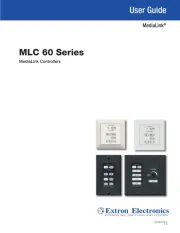
31 Juli 2025
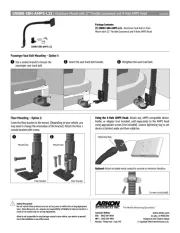
31 Juli 2025
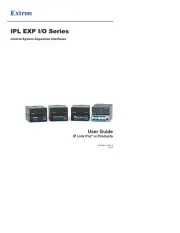
31 Juli 2025
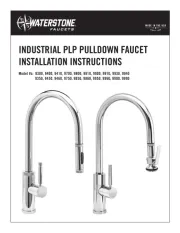
31 Juli 2025
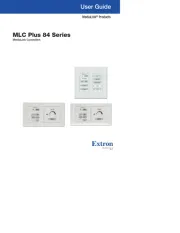
31 Juli 2025
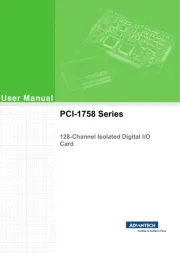
30 Juli 2025
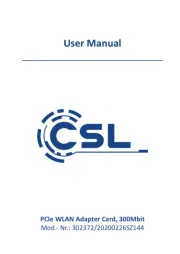
30 Juli 2025
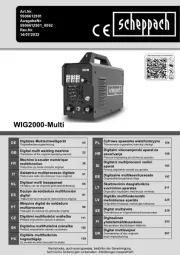
30 Juli 2025
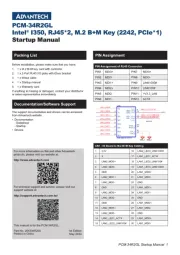
30 Juli 2025